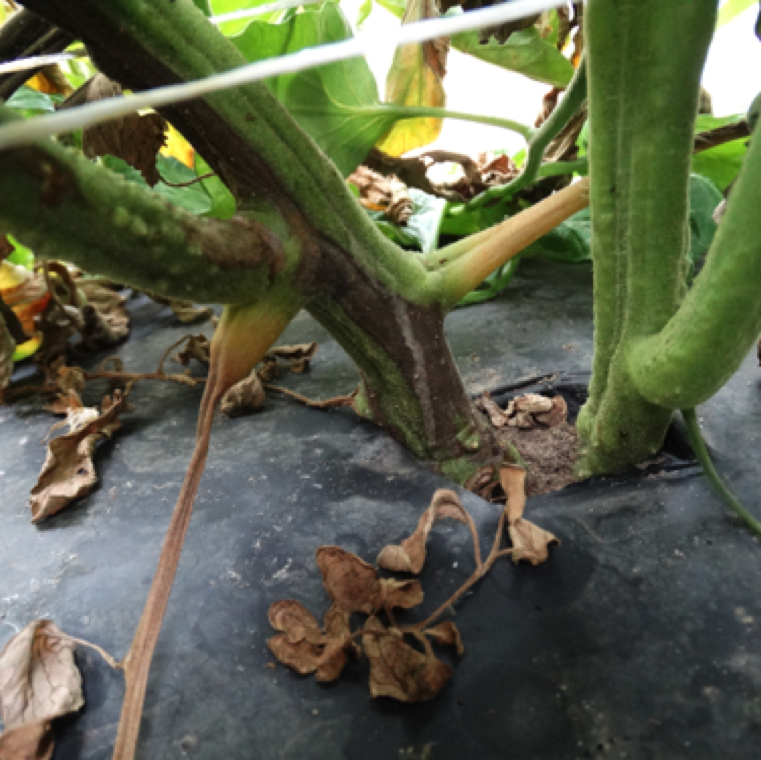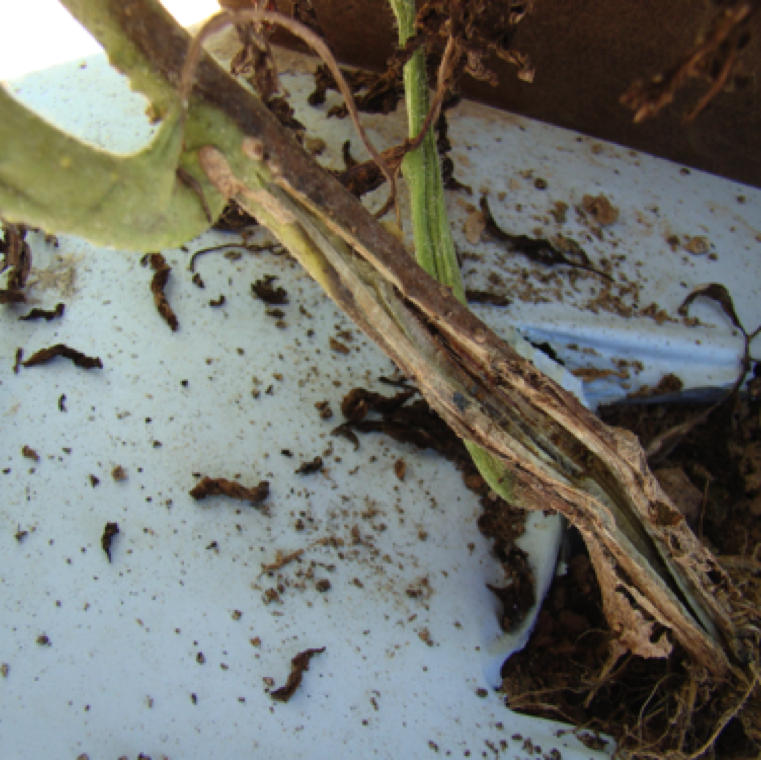


Wilting of sections of the plant or the entire plant is a key symptom of pith necrosis. However, bacterial wilt can cause similar symptoms. Infected stem, peduncles and leaves may have irregular lesions.
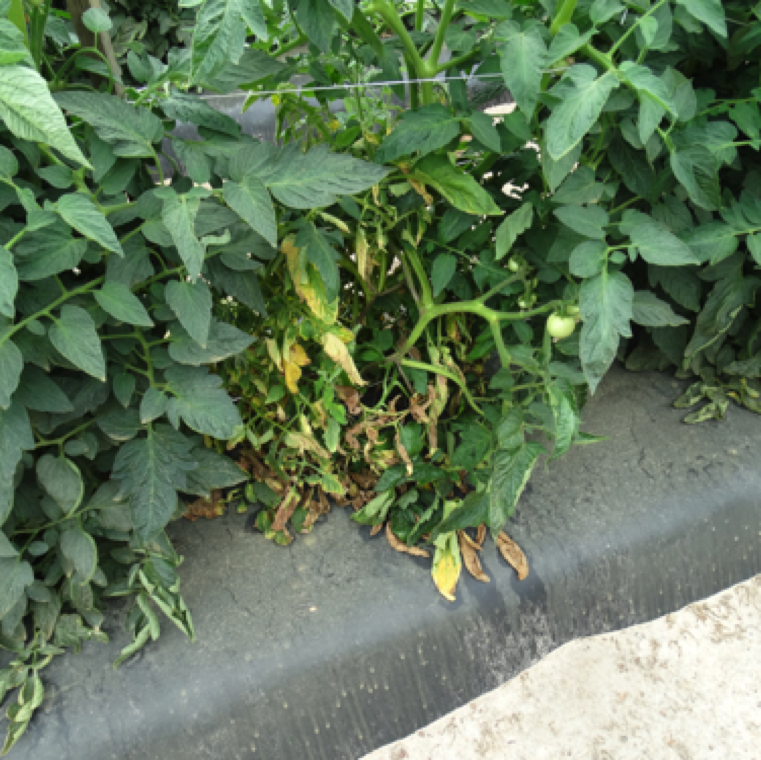
Yellowing of sections of the plant is a symptom of the disease. However, Fusarium wilt or Fusarium crown root rot can also cause similar symptoms.
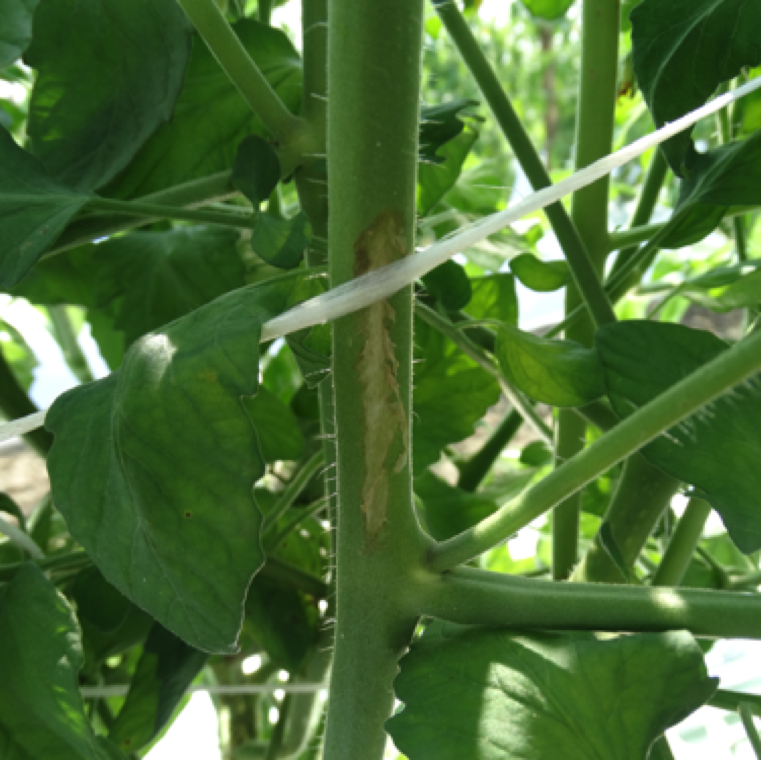
The bacterial pathogen often enters tomatoes through injury of the plants during poor plant tying operation where lesion development can occur at the wound site.
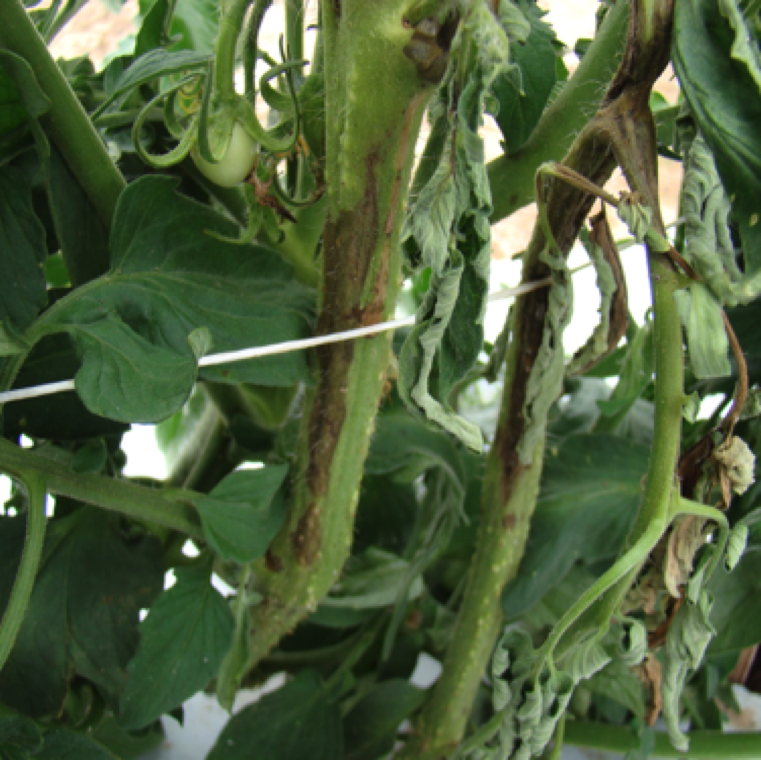
The wound sites becomes a starting location for infection leading to large stem cankers and collapse of sections of the plant can be noticed subsequently.
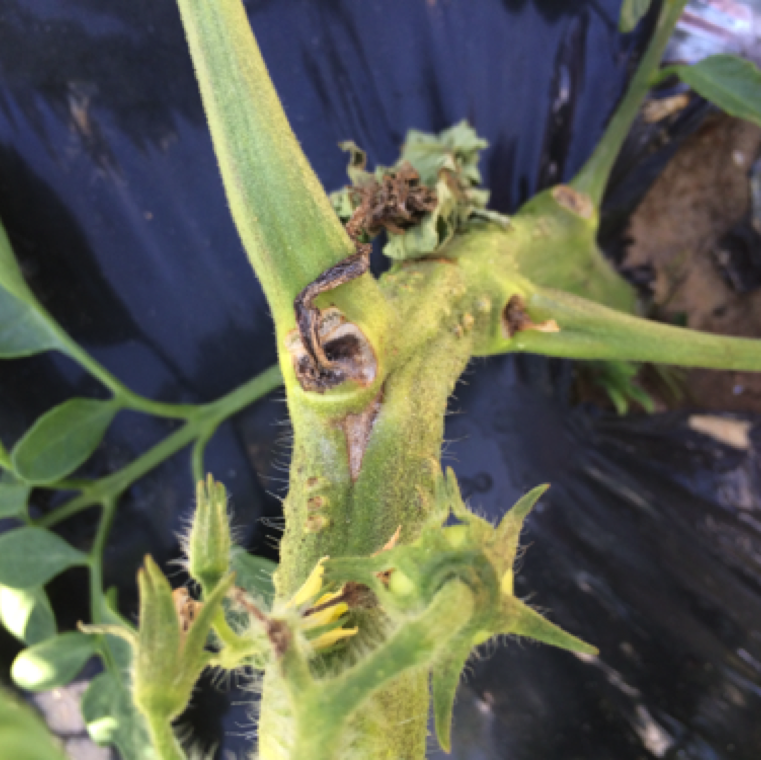
Pruning operations during wet conditions and improper pruning can also lead to creation of wound sites that favors the bacterium to infect the plant.
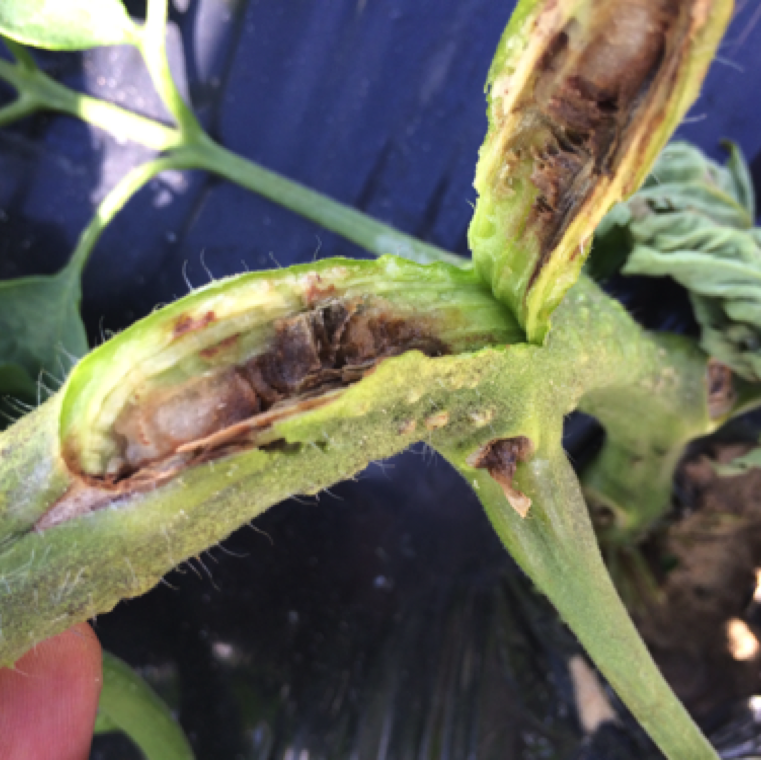
Infection developing from a fresh wound site during wet conditions can cause brown discoloration of the pith and vascular tissue leading to wilting of sections of the plant.
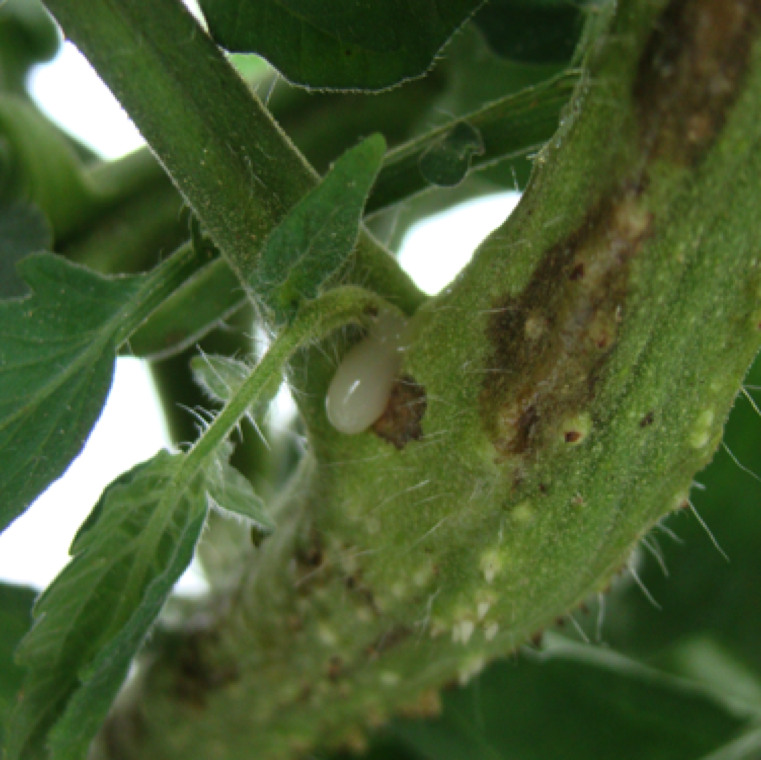
Bacterial ooze can be noticed naturally coming out of the affected stem or when gently squeezed. This is not a definitive symptom for the disease as bacterial wilt can also have cause similar symptom.
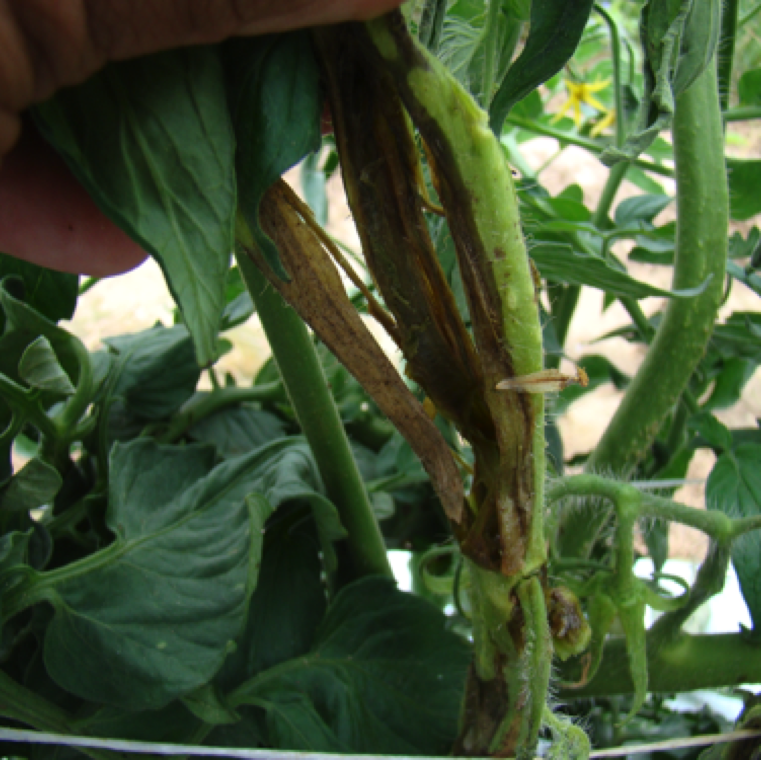
Longitudinal cut on a branch indicating collapse of the pith of the stem that prevented water transport to sections of the plant causing wilting.
BACTERIAL PITH NECROSIS
Bacterial causal agent/s: Pseudomonas spp. including corrugata, mediterranea, cichorii, viridiflava and fluorescens
Tomato diseases
